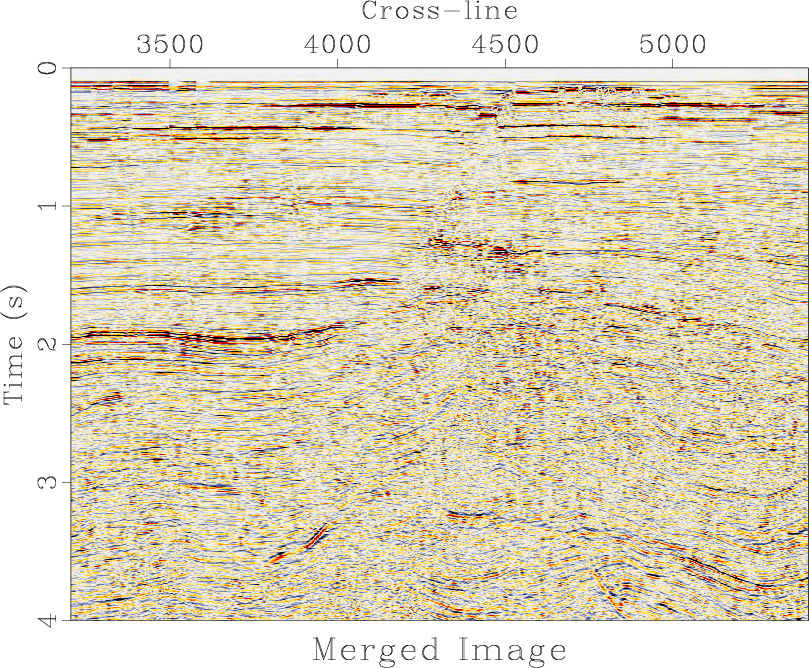|
|
|
|
Matching and merging high-resolution and legacy seismic images |
Modern high-resolution seismic acquisition systems, such as P-cable (Meckel and Mulcahy, 2016; Petersen et al., 2010), can produce detailed images of the subsurface at shallow depths. These images often need to be compared with those previously produced using legacy images from conventional seismic acquisition. In comparison with high-resolution images, conventional images have generally lower frequency content and correspondingly lower resolution, but better signal content at greater depth. In order to reconcile the differences between the two types of images, they need to be properly matched.
Analogous problems occur when interpreting images from multicomponent seismic acquisition. In particular, single-component PP and converted PS images often exhibit significantly different frequency content and need to be balanced for accurate registration (Fomel and Backus, 2003; Fomel et al., 2005; Hardage et al., 2011).
When multiple data sets are acquired over the same area using different technologies, it is likely that these data sets contain signal content from different frequency bands, which correspondingly contain unique information about the subsurface. In order to utilize all available information, it may be beneficial to produce a consolidated broad bandwidth volume that combines these data sets. Many previous methods of seismic data merging have been developed for the purpose of increasing the spatial coverage of the merged volume by combining data from partially overlapping areas. As a result, both the initial and resultant merged images poses similar signal characteristics, most notably spectral content (Mohan et al., 2007; Zhou et al., 2014; Al-Inaizi et al., 2004). However, previously Carter and Pambayuning (2009) were successful in applying a frequency domain merge to two separate seismic volumes over the same area to broaden the effective bandwidth.
In this paper, we consider the problem of matching seismic images obtained in the same area with different resolution. Using techniques borrowed from multicomponent image processing (Fomel et al., 2005), we propose a multistep approach. First, we balance the two images in amplitude and frequency content. As a result, the resolution of the high-resolution image is temporarily degraded to match the resolution of the legacy data. Next, we measure shifts between images using local similarity scanning (Fomel, 2007; Fomel and Jin, 2009). Finally, when the images are aligned and matched, we create a blended image using least-squares inversion in the time domain. The blended image has a wider frequency bandwidth than the two initial images, along with coherent signal content with depth from the legacy image and detailed shallow coverage from the high-resolution image.
We test the proposed approach using data from the Gulf of Mexico. A 2D image is used to illustrate the method, followed by an example applied to 3D data.



|
|---|
|
legacy,hires,merge2-reverse
Figure 1. The initial legacy (a) and high-resolution (b) images. The merged image (c) is the final product of the proposed workflow: the combination of both the legacy and high-resolution images. |
|
|
|
|
|
|
Matching and merging high-resolution and legacy seismic images |